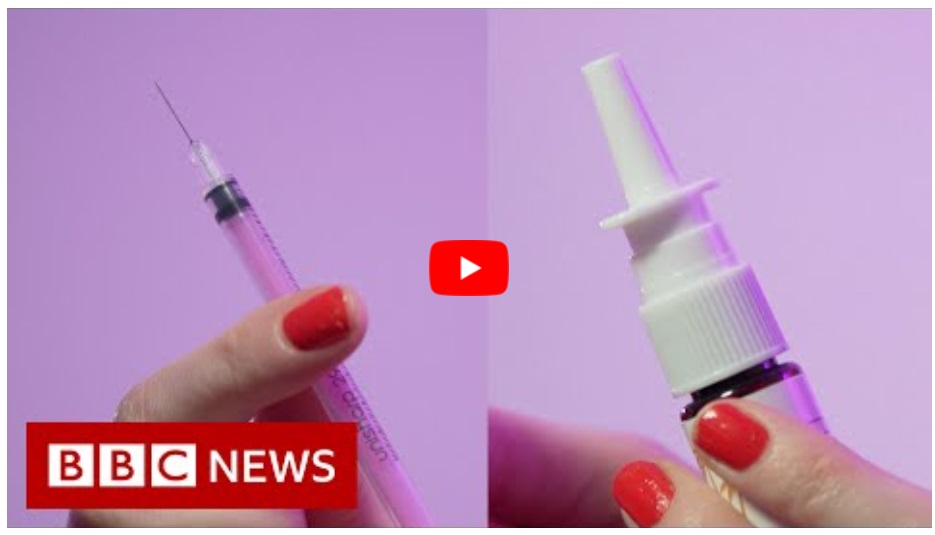
Nasal tanning sprays are tanning devices for the nasal tube. They are intended to address the inability to apply tanning lotions within the nostrils.
A nasal spray device is made from a tiny container with a spray mechanism meant to be used directly in the nose. It is simple to use by inserting the nasal applicator tip into the nose and pressing down on it.
When pushed, the applicator nozzle sprays the contents of the container into the nasal passages in a thin mist. The mucous membranes absorb the contents of the nasal passages and deepen the skin tone, giving them a tanned appearance. This colouring is only temporary. Nasal sprays must be used every day to keep the tanned appearance. Daily follow-up treatments are necessary for the browned hue to vanish the next day.
How Do Nasal Tanning Sprays Work?
The key is in the spray’s contents. Melanotan, a synthetic chemical created in a laboratory, is included in nasal tanning sprays. Melanotan is also known as the Barbie medication.
Melanotan mimics a naturally occurring melanocyte-stimulating hormone in the body. This hormone is inherently in charge of skin pigmentation. Melanotan functions similarly to this hormone, but the main distinction is that it is synthesised rather than naturally occurring. Melanotan is absorbed by the mucosal membrane in the nasal passageways when sprayed directly into the nostrils using a nasal tanning spray. Melanotan enters the bloodstream immediately from here since mucous membranes do not provide a barrier as skin does.
When you stop using the spray, melanin synthesis diminishes, and your skin gradually fades and returns to its natural colour.
How long does it take for nasal tanners to work?
The time it takes for nasal tanners to generate noticeable results varies between individuals and depends on several factors. Dosage is significant, with greater doses of Melanotan II potentially leading to quicker skin darkening but with a higher risk of adverse effects. People with fair skin often show faster benefits than those with a darker complexion. However, results may vary across the body. Nasal tanners work best when paired with UV exposure from sunshine or tanning beds, which means that more UV exposure can speed up the tanning process. Furthermore, individual reactions to Melanotan II vary, resulting in considerable variances in the time required to attain the desired amount of tanning.
Risks Involved With Using A Nasal Tanning Spray

The most significant danger of utilising a nasal tanning spray is its substance. Melanotan is the principal active component in these sprays. This is an uncontrolled synthetic drug developed in laboratories. When melanotan enters the body, it functions like a hormone, stimulating a process known as melanogenesis, which is responsible for creating melanin.
When it happens naturally, the melanogenesis process is safe, but when it is artificially accelerated, it can create a slew of issues in the body. Melanotan inhalation is considered so dangerous that it is prohibited to sell in numerous countries, including the United Kingdom.
The fact that nasal tanning sprays are not regulated in the UK adds to the already known hazards. This implies they are not subjected to rigorous testing to ensure their safety. Before use, all medications must pass thorough quality, efficacy, and safety testing in the United Kingdom. The lack of testing, regulation, and licencing for nasal tanning sprays raises severe concerns, mainly since there is no way of knowing what harmful poisons besides melanotan they may include. Despite the numerous unknowns surrounding these tanning sprays, one thing is sure: they have significant adverse effects. Medical specialists worldwide are raising the alarm about the growing popularity of this tanning treatment.
Potential Adverse Effects Associated With The Use Of Nasal Tanning Sprays
The side effects can range from moderate to unpleasant, significant, and even fatal. These might involve one or more of the following symptoms:
- Flushing or redness of the face.
- Acne outbreaks have increased.
- Increase in the number of freckles and moles on the body.
- Sun sensitivity has increased.
- Diarrhoea and associated gastrointestinal problems.
- Vomiting and nausea.
- Appetite suppression.
- Melanoma, an aggressive skin cancer with a high death rate, is at risk.
- Rhabdomyolysis is when muscle cells dissolve, possibly causing immediate organ harm.
- Prolonged, painful erections
Because nasal tanning sprays are a relatively new innovation, people have yet to learn what the long-term effects of their usage will be.
Conclusion:

The components in each brand are mainly unknown. It is impossible to forecast the specific symptoms a person may suffer. Many users may not notice any adverse effects while using a brand, leading them to disregard the warnings and continue or even raise their dosage over time. However, when people switch brands, they may experience various symptoms.
Recognizing the underlying reason for the symptoms is necessary for dermatologists and medical experts to treat the problem, raising the dangers dramatically. For now, physicians advise against using nasal tanning sprays since the severe and perhaps life-threatening long-term adverse effects exceed the momentary aesthetic advantages.
This content is part of the HWM Partnership.
- Consumer Agency Sues R.G. Ortiz Funeral Home For Exploiting Grieving Families
- Senator’s Op-Ed: CUNY SPH’s Hub For Sexual And Reproductive Justice Gains Funding From NY State
- Harlem Invites The Community To New York Landmarks Conservancy 2024 Sacred Sites Open House
- Sponsored Love: Rare Carat, Best Diamonds To Buy
- Sponsored Love: Choosing The Best AI Tools To Enhance Your Videos
Become a Harlem Insider!
By submitting this form, you are consenting to receive marketing emails from: Harlem World Magazine, 2521 1/2 west 42nd street, Los Angeles, CA, 90008, https://www.harlemworldmagazine.com. You can revoke your consent to receive emails at any time by using the SafeUnsubscribe® link, found at the bottom of every email. Emails are serviced by Constant Contact









